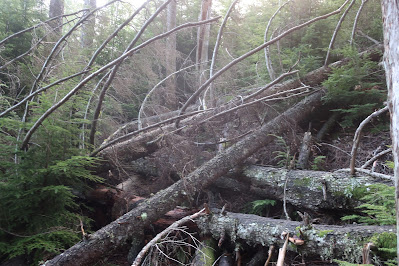Flying back to home I recognized the small British Columbia town of Blue River through a break in the clouds.
I recognized this location because of some recent literature research I was doing on carbonatites combined with a bit of Google Earth viewing to find the locations of carbonatite claims so I could do some comparative geology. I had looked careful at this area and read numerous reports on the carbonatites found in the area so easily recognized the lake and town through the break in the clouds. Carbonatites are igneous rocks containing predominantly carbonate minerals. Carbonatites have been a focus of exploration in British Columbia and there have been several claims with associated exploration sampling in the Blue River area. The carbonatites occur within an area of alkaline igneous rocks that intrude the Paleozoic strata west of the Rocky Mountains in the eastern part of the Omineca Belt.
The interest in these rocks is that carbonatites can be enriched with rare earth elements. A hot topic in geopolitics. With a long and ongoing mining history as well as mineral processing, BC may be well positioned to exploit these resources if it proves feasible. The thick forest and rugged terrain do present a challenge relative to the well exposed deposits in China. China also has had the advantage of a longer period of figuring out processing the ores - an underappreciated aspect of the minerals industry.
The Canadian federal government has been supporting some of the exploration as well as mineral processing.






























